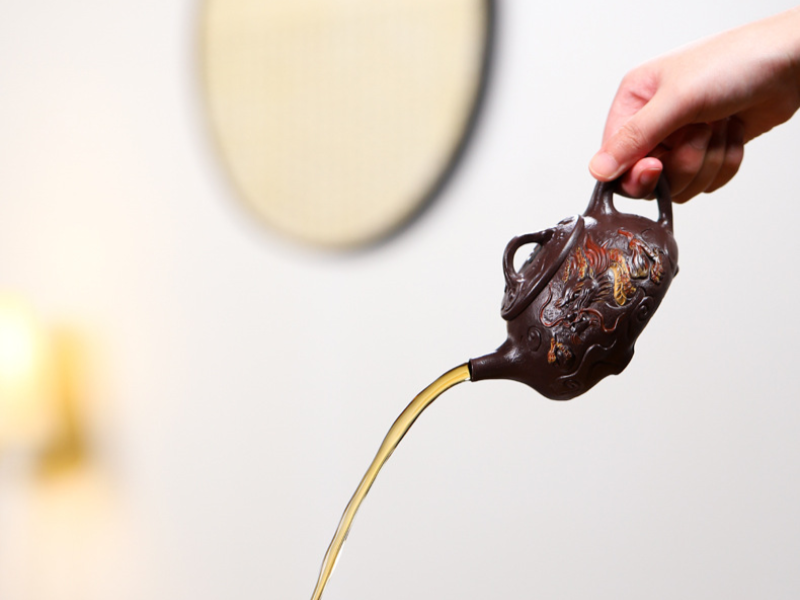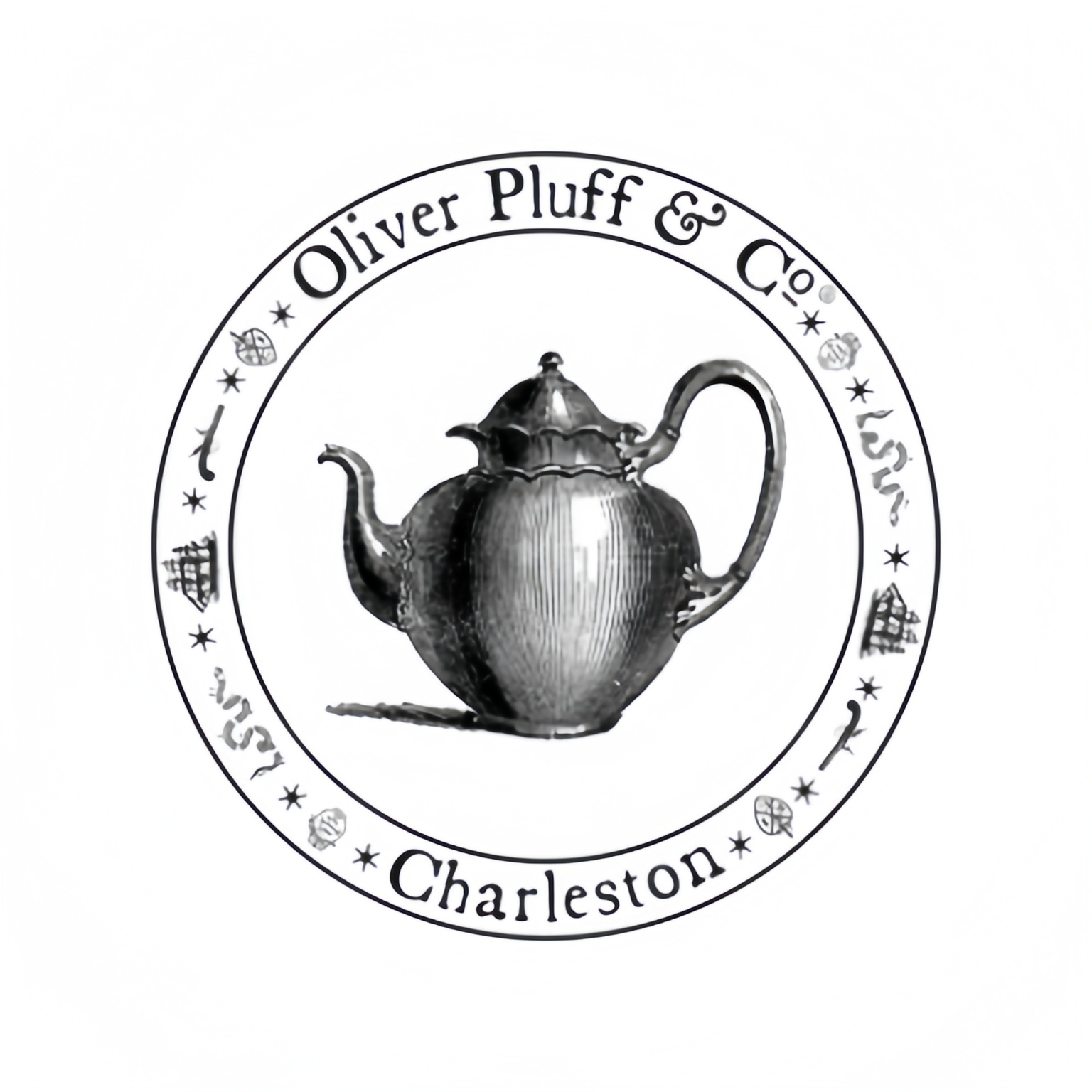Product Detail
The Ultimate Guide to Traditional Chinese Tea Ware for Tea Lovers
Traditional Chinese tea sets have thousands of years of history and culture, they are not only about the function of brewing tea, but also reflect arts and aesthetics. If you are a tea lover and want to learn more about these beautiful tea sets, this guide is right for you.
Historical Significance: Tapping Into An Ancient Tradition
Every authentic Chinese tea set carries the weight of dynasties gone by, with styles that have remained largely unchanged for hundreds if not thousands of years. Many of the basic fundamentals of tea sets were established during Tang dynasty (618-907 AD) and have been enriched over time.

Understanding the historical context of Chinese tea sets means that drinking tea with them becomes a richer experience. Every cup becomes a link to millennia of tea masters and cultural scholars from across the many unique regions of China.
Artistic Mastery: Appreciating Great Craftsmen
Traditional Chinese Tea Sets represent the highest level of ceramic craftsmanship and artistry, elevating technical skills to the level of creative expression. It takes master craftsmen decades of experience to practice and perfect their skill, bringing unique creations to the world. These objects are functional implements, to be sure, but they are also highly collectible pieces of art.
Many pieces are adorned with traditional decorative techniques such as famille rose painting, underglaze blue patterns or natural clay surfaces that develop flavor with use.
Tea Appreciation and Fashion—Artistry in Display
The appearance of traditional Chinese tea ware elevates tea drinking from a daily affair to an art form. From the silhouette of the teapot to the curve of the edge of a cup, every piece is formed with aesthetics that not only add to its beauty but also enhance its functionality.
Articulation and organization of a tea service is an expression of a host’s taste and respect for society. Every tea session is an unforgettable aesthetic experience with the right equipment.
Exquisite Details: Appreciating Fine Craftsmanship
It’s these exquisite details that make traditional Chinese tea sets so beautiful to appreciate and contemplate. Parts and details that may seem like they are simply for the sake of aesthetic beauty also serve utilitarian purposes. It’s this attention to both artistic and functional purposes that have been honed over the course of centuries that makes these sets so fascinating.

Between dragons, symbols of good fortune and natural wood elements, every motif and every small detail can tell a tale, be it concerning natural features, cultural customs or tried and true artistic trends passed on over generations.
Tea Lovers: Bringing Out the Best Flavour and Aroma
For a true tea lover, a traditional Chinese tea set can bring out the best flavors and aromas the tea has to offer more than any other type of tea pot. Materials, shapes and sizes have been carefully selected to complement and bring out the most from every tea variety.
Different clay mixtures and firing techniques create opportunities for individual pieces to enhance different tea categories, from delicate, floral green teas to robust, earthy pu-erhs.
| Material | Characteristics | Best For | Price Range |
| Yixing Clay | Porous, seasons with use, enhances flavor | Dark teas (oolongs, pu-erh) | $100-$2000+ |
| Porcelain | Non-porous, easy to clean, neutral taste | All tea types, beginners | $50-$500 |
| Celadon | Glazed ceramic, beautiful green colors | Green teas, display | $75-$800 |
| Glass | Transparent, shows tea color, modern feel | Light teas, visual appeal | $30-$300 |
Data Source:
- Yixing Clay: Porosity, flavor-enhancing properties, price range, and suitability for dark teas (oolong, pu-erh), from the Jiangsu Province Yixing Zisha Protected Geographical Indication (PGI) registry and China National Intellectual Property Administration.
http://www.cnipa.gov.cn/art/2020/7/1/art_2225_494.html
Timeless Aesthetic Beauty: The Restorative Elegance of Timeless Design
Ancient Chinese tea sets have a timeless durable beauty that transcends fashion and transience. A proper tea set that was well designed will never lose its beauty or function, and can continue to be used and appreciated over generations.

Such traditional principles make objects that appear both timeless and current, feel both enduring and contemporary, have mass-appeal and very culturally specific and nuanced elements that deepen the more one engages with them in practice.
Heritage Lovers: Connecting with Meaningful Values
Practising with and owning traditional Chinese tea sets helps ground the modern practitioner in heritage and tradition that consist, abstractly, of an unbroken genealogy of cultural transmission. They represent many cultural values that continue to be applicable and valuable today, such as patience, respect, mindfulness and community.
Through practising traditional Chinese tea culture today, practitioners are practising preservation and transmitting many valuable cultural elements to future generations.
Tea gatherings: Unity through tea-drinking
Cultural Chinese tea sets become the center of social events and cultural rituals, creating moments of connection and celebration among family, friends and colleagues. The act of preparing tea and drinking tea creates an atmosphere of respect, patience and awareness that goes unsaid in words.

Gongfu cha (kung fu tea) transforms tea-drinking into performative art, inherited from the ancient past. Occasions become festive as hosts showcase their skill, hospitality and appreciation for their guests through a mastery of movement and timing.
Family Treasures: Meaningful Opportunities for Engagement With Others
One of the best ways to appreciate a tea set in a family context is through hosting tea experiences with one’s own family. Such events become the focal point of the occasion, providing structure for sharing stories, teaching and solidifying generational links. Ritual elements provide grounding and calming benefits.
Many families have their own variations of traditional rituals, combining elements in unique ways to suit their lifestyle and preferences and to better adapt tradition to the modern day and age.
Ceremonial Use: Formal Occasions and Special Events
Traditional Chinese tea sets are often used in formal ceremonial contexts, where their beauty and cultural importance lend gravitas and significance to important occasions. The properly ceremonial use of traditional tea sets require familiarity with ceremony, propriety and protocol.
| Aspect | Traditional Chinese | Modern Western | Hybrid Designs |
| Cultural Value | High authenticity | Limited cultural connection | Moderate cultural elements |
| Brewing Performance | Optimized for specific teas | Generic functionality | Balanced approach |
| Aesthetic Appeal | Classical elegance | Contemporary styling | Fusion aesthetics |
| Learning Curve | Requires cultural knowledge | Intuitive use | Moderate complexity |
| Price Range | $50-$5000+ | $20-$500 | $75-$1500 |
| Maintenance | Specific care requirements | Easy cleaning | Moderate maintenance |
Data Source:
- Traditional Chinese: High authenticity, brewing optimization, and cultural value are described in the Jiangsu Province Yixing Zisha Protected Geographical Indication (PGI) registry and China National Intellectual Property Administration.
http://www.cnipa.gov.cn/art/2020/7/1/art_2225_494.html
The formality of ceremonial use illustrate the deeper spiritual and social significance of tea culture beyond mere beverage consumption.

Scenario Extension Tool
Which Industries are Chinese Traditional Tea Sets Applied To?
Traditional Chinese tea sets are applicable to various industries and contexts, including:

What Common Problems Can Traditional Chinese Tea Sets Solve?
Frequently Asked Questions FAQ
Here are answers to the most common questions about traditional Chinese tea sets and their use.
Examples and Customer Stories
Case Study 1: Johnson Family
Having been introduced to traditional Chinese tea culture on a business trip to Shanghai, the Johnson family was fascinated by the rich history of Chinese Tea Ceremony and the sense of family and community that Chinese tea brings. Therefore, they decided to gather the family regularly to drink tea.
Implementation: They purchased a mid-range Yixing clay set and began holding “tea time” once a week, on Sunday afternoons. During these sessions, family members would each share stories from their week with each other. No cellphones or other distractions were allowed during this time.
Results: Better family communication and bonding, reduced stress levels for all family members, increased mindfulness and appreciation for the virtues of patience, and enduring family memories and traditions.
Quote from Mrs. Johnson: “Our tea set has become the centerpiece of our family life. It’s amazing how slowing down for tea has brought us closer together and taught our children the value of presence and respect.”
Case Study 2: Mountain View Spa Integration
Background: Mountain View Spa, a luxury wellness spa, looked to set themselves apart from competitors by offering authentic cultural practices to coincide with their mindfulness programs.
Implementation: They purchased a set of authentic Chinese tea sets and taught their employees the proper methods and procedures for conducting a Chinese tea ceremony, from traditional tea brewing to mindfulness tea ceremony meditation. The spa began offering tea meditation sessions as part of their mindfulness programming, with half hour sessions where participants learn to brew and drink teas in the traditional manner, followed by a guided meditation focusing on inner peace and mindfulness, all made through tea.
Results: 40% increase in overall customer satisfaction, a new source of revenue generating $50,000 per year, 50 positive reviews complementary of their new incorporation of Chinese culture and heritage in their programming, and on site employees reported higher job satisfaction and an appreciation for the cultural significance of Chinese tea.
Quote from the Spa’s Director: “The tea sets helped transform our mindfulness programs from simple relaxation sessions into profound cultural experiences that our clients treasure.”
Case Study 3: Educational Institution Success
Implementation: The school purchased several relatively inexpensive student traditional Chinese tea sets, and integrated teaching of the tea ceremony into their student curriculum. Students learned background and historical context, discussed the cultural values involved, and were trained in practical tea ceremony skills.
Results: Students were more engaged in cultural study, the students gained a higher understanding of Chinese philosophical ways of thinking and values, students developed patience and mindfulness skills, and cross cultural appreciation and respect were fostered.
Teacher Comment: “Some of the students who were previously not interested at all in the study of culture were fascinated when they had the opportunity to actually do something traditional. The tea sets gave a tangible, meaningful context for abstract concepts.”
Case Study 4: Corporate Team Building Success
Background: TechForward Inc., a software company, was experiencing challenges in team cohesion and stress management among their employees working on high-pressure projects.
Implementation: Monthly tea ceremony sessions were scheduled with a cultural consultant leading them. A proper traditional Chinese tea set was purchased and placed in their wellness room used for the ceremonies.
Results: 35% reduction in self-reported stress levels, improved communication between different teams within the organization, greater cultural understanding and sensitivity, and creative problem-solving sessions noticeably improved.
Quote from HR Director: “The tea ceremonies created a unique space for authentic connection. Employees report feeling more centered and collaborative after our sessions.”
Conclusion
Traditional Chinese tea sets are more than just beautiful objects—they are pathways to cultural understanding, personal mindfulness, and meaningful social connection. If you’re looking to deepen your appreciation of tea, connect with cultural heritage, or create special moments with family and friends, these exceptional sets offer a timeless value that only grows richer with use.
An investment in a good, old-fashioned Chinese tea set lasts well beyond the date of purchase — offering years of enriched tea drinking, education in an ancient culture and quiet (but important) moments of harmony in our increasingly distracted lives. Choose wisely, care for well and enjoy the journey that is one of mankind’s most elegant cultural traditions.


















Malik Jefferson –
Great starter set if you are interesting in gongfu brewing.
Camille Harris –
This reminds me of going over to my grandma’s house. She had one like this, now I see why she cherished it so much.
DeAndre Wilson –
Exceeded my expectations in every way. The cups fit perfectly in your hands.
Destiny Brown –
It’s amazing the difference having the correct teaware makes. My oolong tastes amazing now.
Jamal Robinson –
Perfectly balanced weight and shape, you can tell it’s been made by someone who actually drinks tea.
Brianna Davis –
Turns an average tea into a great tea. Highly recommend for the serious tea drinker.